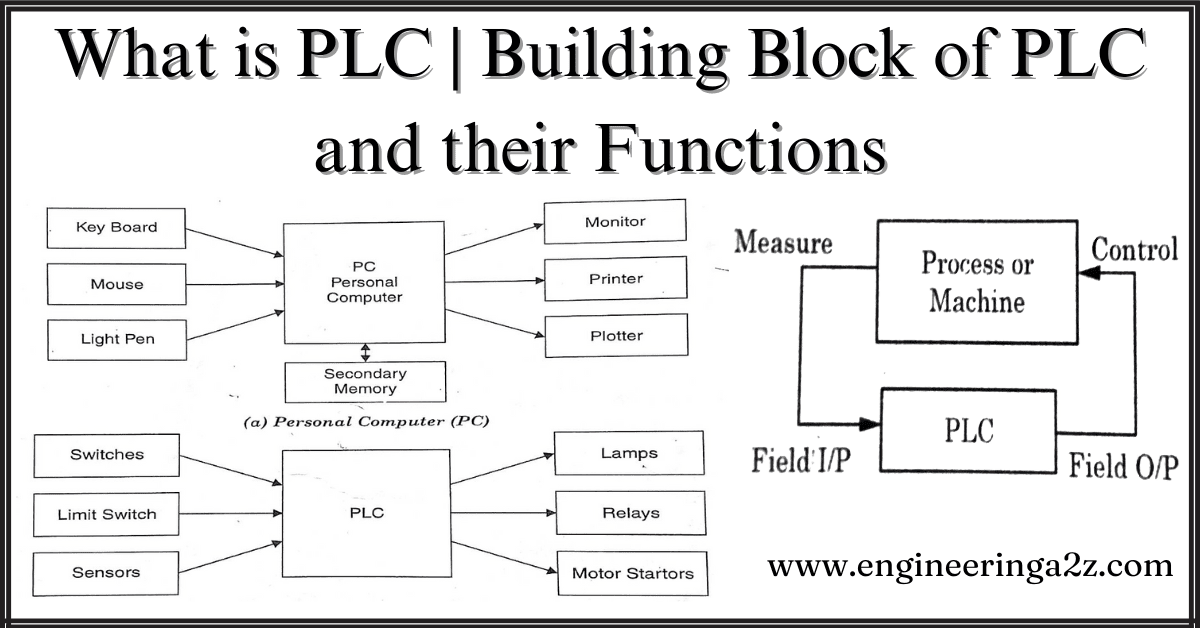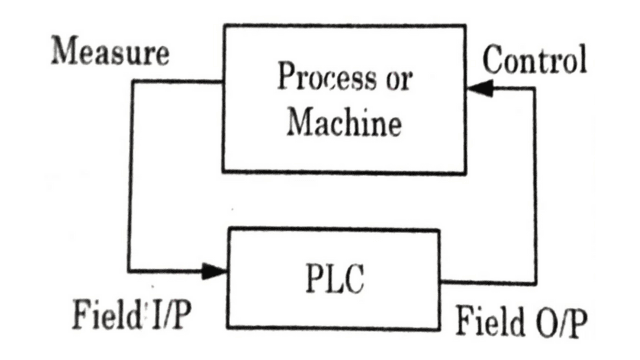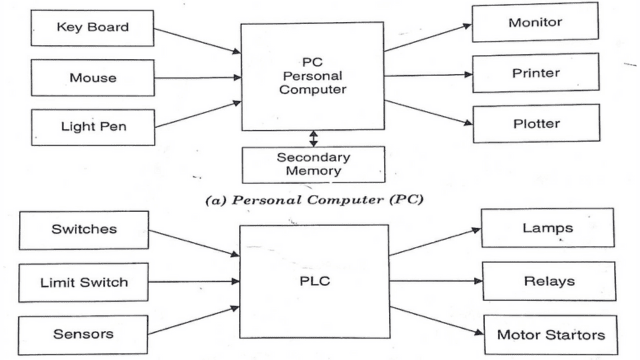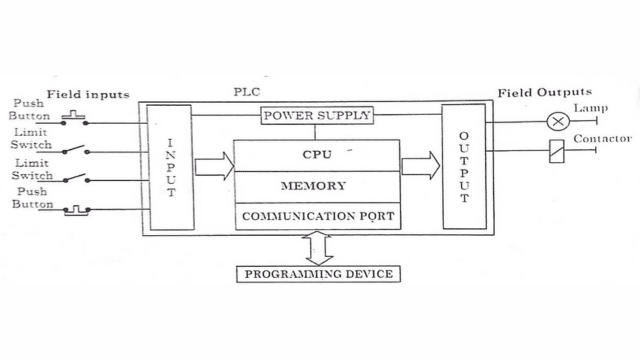
Table of Contents
Concept of PLC
A programmable logic controller (PLC) is a microprocessor-based specialist computer built to work in loud industrial conditions. It can perform a variety of control functions and is rather complicated. A PLC contains a high number of input and output terminals. It includes an operating system in its internal ROM, allowing users to program it using a basic language similar to a relay logic diagram known as ladder programming. Its purpose is to monitor critical process parameters and change process activities in response to these data. It is simple to program, control, and operate, and requires no highly experienced personnel.

Building Block of PLC and their Functions
PLC architecture is similar to that of a computer; in fact, a PLC is a specialist digital computer used for the automation of electromagnetic processes. Both contain a central processing unit that controls the device’s operation and a comparable input-output interface. Both utilise the keyboard and monitor to enter the programme and data, however, there are some differences, which are as follows.

- PLCs have additional input and output devices such as switches, push buttons, limit switches, sensor lamp indications, relays, solenoids, and monitors. In computers, the majority of input-output devices are single-bit devices that transport huge amounts of data and have a data length of one byte or greater.
- Unlike PCs, PLCs are designed for industrial environments and can withstand vibration shock, high temperatures, and electrical noise.
- Unlike computers, which use an English-language syntax for programming, PLCs use ladder logic programming, which is more similar to relay diagrams.
- PLCs have limited memory size compared to computers and have fixed software for a particular PLC.

Following are the basic blocks of PLC
- Input Module
- Output module
- CPU
- Memory
- Power supply
- Programming device
Input Module and Output Module offer PLC connectivity to the industrial process to be managed. The controller receives signals from limit switches, push button sensors, and other on/off devices. Larger PLCs can also take signals from analog devices. Multi-bit digital signals, depending on the kind of input module, are used to drive motors, valves, buzzers, solenoid lamps, and so on.
CPU The central processing unit also called the processor module is a microprocessor microcontroller base control system similar to that used in computers. It executes the various logic and sequencing functions on the PLC inputs and intermediate results to produce the propagated output signal.
Memory is used to hold the system software user program data and results full stop CPU rates program instruction and input data from memory, processes the data according to the instruction and stores the result in the memory.
Power Supply section provides the DC and AC supply to the different sections of the PLC as per they are requirements. Input AC supply is rectified filtered and regulated to produce various operational DC values.
Programming Device is used for programming the PLC the programming device is usually detachable from the PLC cabinet so that it can be shared between computers and can be used as a programming device.
Advantages Of PLC
there are many advantages to using a programmable logic controller-based control system rather then conventional relays.
- Flexibility: control system design using PLC is very flexible and can be easily modified since PLCs are controlled through software to change a process only a modification in the program is required.
- Pretesting : A PLC program circuit can be pre-run and evaluated in the lab the program can be typed in tested observed and modified if needed 10 saving valuable factory time.
- Space Requirement : PLC-based systems are very compact and can be installed in much smaller spaces.
- Reliability : Solid-state devices are more reliable as compared to mechanical and relay systems. The PLC is made of solid-state components and has very high liability.
- Maintenance : as the software programs are not subject to wear and tear, PLC requires very low maintenance only the cables connecting the input-output devices to PLC need to be maintained.
- Power Consumption : PLC requires very little power for functioning as compared to relay-based control systems.
- Installation : Installation of PLC is very easy. The program can be entered even on the factory floor by anyone who can understand leder logic.
- Speed of operation: the operational speed for the PLC program is very fast. The speed for the PLC logic operation is determined by scan time which is in milliseconds.
- Remote monitoring and control: An advanced PLC-based control system can be easily monitored and controlled from anywhere in the world using the internet.
- Debugging : it is very easy to trace out problems in a PLC-based control system. In an advanced PLC system an operator message can be programmed for each possible malfunction whenever any malfunction occurs the corresponding message appears on the screen of PLC.
Frequently Asked Questions (FAQs)
What is a PLC?
A PLC (Programmable Logic Controller) is a specialized computer designed for industrial automation. It is similar to a regular computer but is built to withstand harsh conditions like extreme temperatures, vibrations, and electrical noise. PLCs are used to control machines and processes in factories, power plants, and other industrial settings.
How do PLCs work?
PLCs work by continuously monitoring input signals from sensors and other devices. The PLC program is then executed based on these input signals. The program instructions determine the output signals that are sent to control devices.
What are the basic components of a PLC system?
Input Module: Receives signals from sensors and switches.
Output Module: Controls actuators such as motors and valves.
CPU (Central Processing Unit): Processes input data and executes programmed logic.
Memory: Stores system software, user programs, and data.
Power Supply: Provides necessary power to different sections of the PLC.
Programming Device: Used to program and modify the PLC’s logic and behavior.How can I learn PLC programming?
There are various resources available for learning PLC programming, including online tutorials, books, and training courses. Additionally, many manufacturers offer software simulators that allow users to practice programming PLCs in a virtual environment.
Read Also:
- Circuit Theorem | Thevenin’s Theorem
- Basic Electrical Engineering | Engineeringa2z
- Fundamentals of Electric Circuits Solutions 6th Edition PDF
- B.Tech – MDU Previous Year Question Papers Download





Leave a Reply